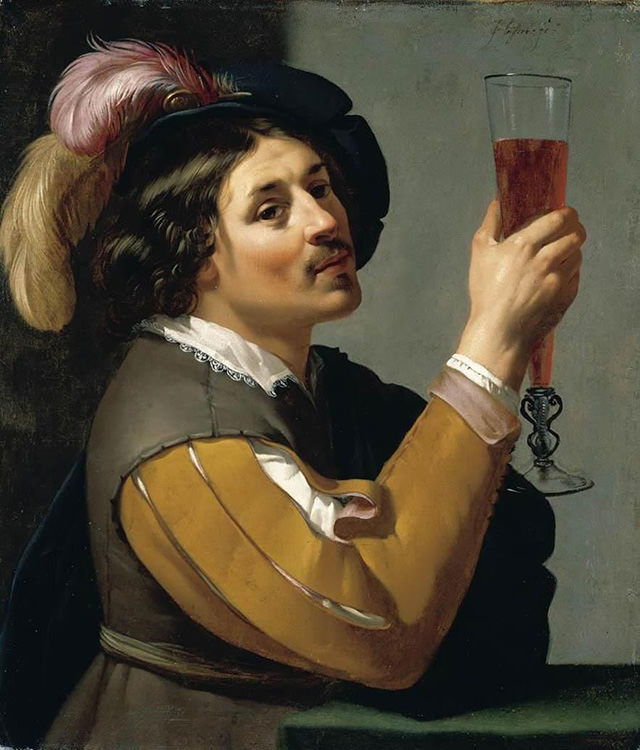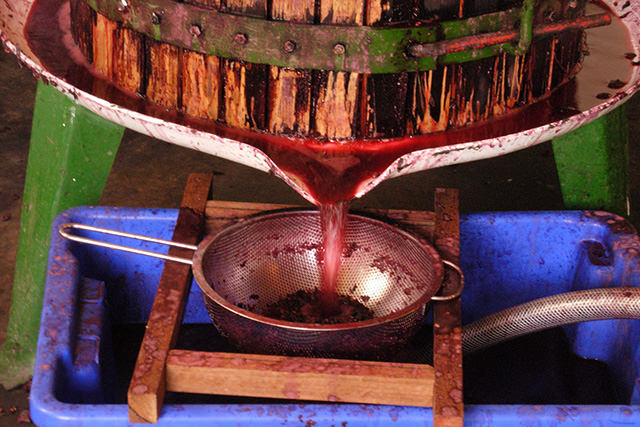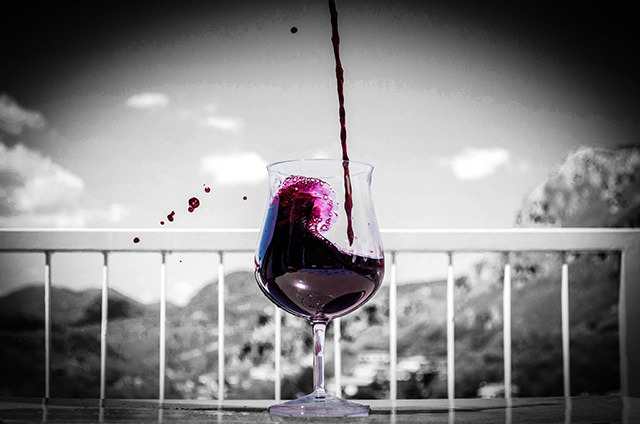It doesn’t sound appealing yet that’s what wine is, fermented grape juice. As we learned in Alcohol 101, alcohol is produced by the fermentation of sugars. And it appears grapes are very suitable for fermentation due to their natural chemical balance. It allows them to ferment without the addition of sugars, acids, enzymes, water or other nutrients. But let’s look at history before we go into the technicalities of the production process.
Wine seems to be almost as old as alcohol itself. The earliest evidence of wine was found in Georgia, where 8000-year-old wine jars were found. In Iran 7000-year-old wine jars have been discovered and Armenia can boast the oldest known winery clocking in at 6100 years old.
By 4500 BC wine was being produced in ancient Greece, Thrace and Rome. The Phoenicians who sailed from city-states along the Lebanese, Syrian and Israeli coast brought wines to Western Europe.
But it was the Romans who laid out the foundations of Europe’s thriving wine culture. Unlike the Phoenicians who shipped their wine all over the Mediterranean they thought it better to start local vineyards, sustainability before Christ. They planted vineyards in their colonies, France, Spain, Germany, Hungary and Romania. The Roman Catholic Church took over the role of the Roman vintners in the middle ages. Wine was established and a couple of centuries of ravishing wars and shifting borders didn’t deter its production.
Before production, however, grapes need to be grown. The grapes you buy at the supermarket aren’t suitable for wine making. During the ages certain varieties proved better for winemaking than others. The European species Vitis vinifera came out as the winner. Most wine is made from the Vitis Vinifera along with some hybrids.
Now we have our grapes. The next step, arguably the most important one in the whole process, is where to grow them. Terroir is the set of environmental factors that affects the crop’s epigenetic qualities. In other words, different environments create different tasting grapes and thus, different tasting wine. From the minerals in the soil to the yearly rainfall and local yeasts; all determine what a wine will be like. The terroir is the most important and influential factor when it comes to the quality and character of the grapes and ultimately the wine.
Wine grapes grow almost exclusively between 30 and 50 degrees latitude north and south of the equator. So all the excellent terroir outside of those latitudes isn’t apt for growing. (However, global warming might change that.)
After we’ve grown our grapes they need to be harvested. The decision to harvest the grapes is made by the winemaker and is informed by the level of sugar, acid and pH level of the grapes. Other factors such as ripeness, berry flavor, tannin development, the overall disposition of the grapevine and weather forecasts are taken into account as well.
Grapes are either harvested by hand or mechanically. Stating the obvious, harvesting by hand wields better results than mechanical harvesting. It has the advantage of using knowledgeable labor to not only pick the ripe clusters but also to leave behind low quality clusters. Smaller wineries and wineries producing high quality wine will usually revert to handpicking.
After harvesting, the grapes are crushed, de-stemmed and pressed. Depending on the scale this is done manually, aided by small machinery or either entirely mechanical. This process is different depending on which wine is being made.
When making white wine, the fruit is only crushed. The stems are placed in the press with the berries. During the pressing the stems’ presence in the mix allows juice to flow past the flattened skins, which accumulate at the edge of the press. Sometimes winemakers choose to crush white grapes for a short period of skin contact. This is mainly done to extract flavor and tannin from the skins. It also increases the juice’s pH levels, which can be desirable for overly acidic grapes.
For rosé wines the fruit is crushed and the dark skins are left in contact with the juice just long enough to extract the color the winemaker desires.
To produce red wine the grapes are usually de-stemmed before pressing and fermentation. Otherwise the stems can give off too much tannin and add a vegetal aroma to the wine. Sometimes the winemaker may decide to leave them in if the grapes themselves contain less tannin than desired. Most red wines derive their color from grape skins. Therefore contact between juice and skin is essential. To produce red wine, the grapes are de-stemmed and then crushed into a tank leaving the skins in contact with the juice throughout the primary fermentation.
The primary fermentation is where things are starting to look more like wine. To convert the sugars from the grapes to alcohol, yeast is needed. Yeast is normally already present on the grapes and the alcoholic fermentation can be done with it. Yet natural yeast is too unpredictable, so often cultured yeast is added. The main problems with natural yeast are that they can fail to complete the ferment and they produce unpleasant acetic acid (vinegar) as a by product.
During the primary fermentation, the yeast cells feed on the sugars in the must (= product that’s fermented after crushing/de-stemming/pressing wine grapes), they multiply, producing carbon and alcohol. Fermentation requires temperatures from 22 to 25 °C for red wine and 15 to 18 °C for white wine.
After the primary fermentation, red wine is pressed, separating the skins and other solid matter from the liquid. White wine is pressed before fermentation.
A second fermentation follows during which the wines age and fermentation continues very slowly. This fermentation takes place in either large stainless steel vessels or oak barrels.
Blending and fining the wine is what follows. During this stage the wine is made ready for consumption. To achieve the desired taste the winemaker can blend different batches before bottling. The wine is also cleared through filtration or by addition of clarifying agents. Clarifying agents are usually animal products (such as egg whites) and most of them are filtered out before the wine is bottled. Wine that isn’t clarified would be very opaque and contain a lot of residue making it unpleasant to drink.
After the blending and fining stage preservatives are added, the most common being sulfur dioxide. Preservatives have a number of useful applications in the wine but the main reason is to stop the fermentation process, which would otherwise continue turning the wine into vinegar. Another important aspect of adding preservatives is the prevention of bacterial spoilage that can easily occur no matter how hygienic the winemaking practice.
After all this hard work the wine is bottled. Congratulations, you now know how to produce your own wine. If you’d rather stay on the drinking side, however, that’s more than fine with us.
Cheers
[Article by Alexander Eeckhout]



 0
0